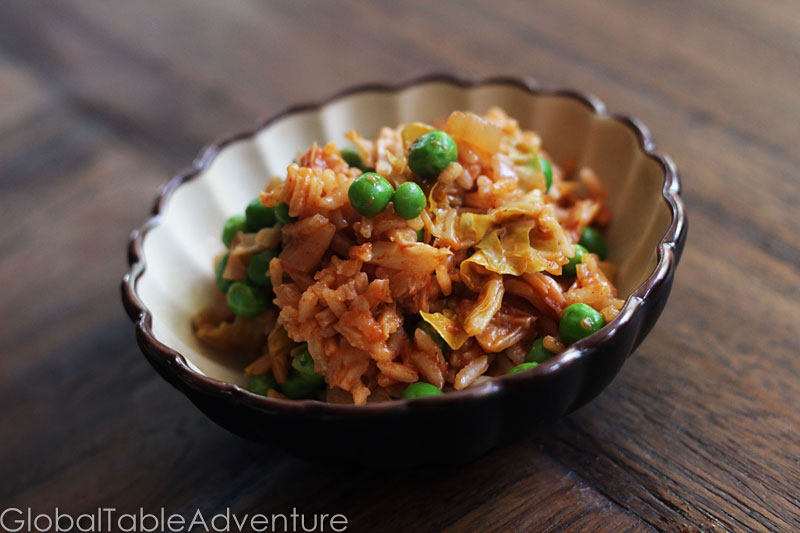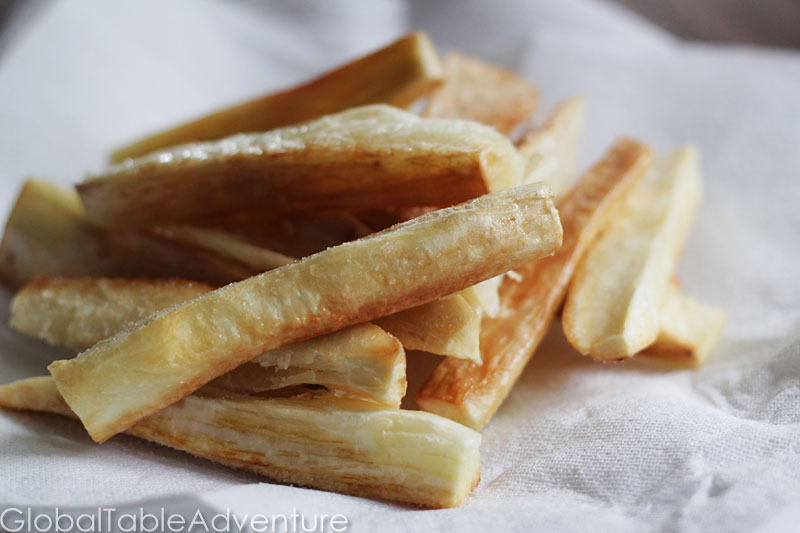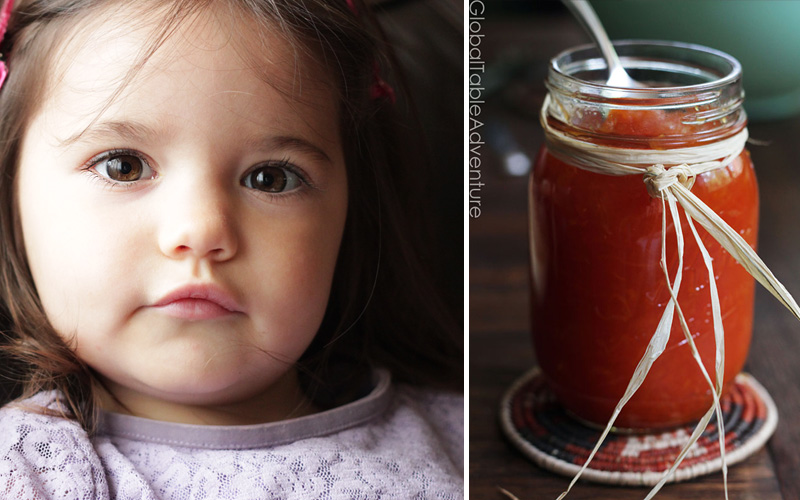THE SCENE: I cut into the yucca root, first trimming the ends, then cracking it down the middle. Instead of revealing creamy white flesh, the yucca was speckled and streaked with brown. Rotten. I grabbed the peeler and stripped off the thick skin, exposing even more bruised flesh. Why I peeled that rotten yucca, I cannot tell you, but when I was done, I dutifully cut it into thick sticks and placed them in a pretty pile. I then pushed the pile straight into the trash. Darn yucca. Mocking me again. I looked over at the second and final yucca root, eying the waxy brown skin. It looked exactly the same as the first – no outer signs of distress. No signs of rot. I took a deep breath and cut one end open, swearing I would never ever make another yucca dish if this one wasn’t any good. At the very least I wouldn’t make another yucca dish that day – I had no way to get to the supermarket. As I cracked the knife away from the …
Read More
Serves 6-8 Listen, friends. I thought Jollof sounded weird. Scary. Difficult. It’s not. This is rice with veggies. And spices. Sometimes meat, but not here. Not today. All over West Africa people enjoy Jollof. They make it with whatever they have on hand and more often that not it does not include meat. This recipe is flexible. It’s usually spicy. And it always has some version of tomato sauce/paste in it. The rest is a fun improvisational dance. So, go on – boogie, boogie through that bottom drawer and pull out whatever veggies inspire you. Ingredients: 2 cups frozen green peas vegetable oil 1 onion, chopped 2 cloves garlic, sliced 1 tsp ginger (fresh grated or ground) 1/2 tsp ground cinnamon 1/4 tsp cayenne 15 oz can tomato sauce or puree 1 small head of cabbage, chopped 2 cups white rice 1 quart water or stock salt and pepper, to taste Method: My boogie, boogie led me to peas, which is a fairly common addition to Jollof. So, first things first, set out the green …
Read More
Serves 2-4 I never thought the day would come. I never thought I would conquer the mighty yucca. This tuber has made sweat, cry, and is quite possibly be the reason why I blacked out and went crashing to the floor one night after eating way too many Bâton de Manioc – out cold for a good thirty seconds. To be fair, the next day the doctor blamed dehydration. Regardless, given my terrible past with this tuber, I have a deep need to remedy my track record, this time with yucca fries. Who can mess up fried yucca, right? As far as fried food goes, it’s healthier than a potato but gives you the same indulgent fix. So, dip it in the oil until golden, sprinkle some salt and satisfy those munchies! Ingredients: 1-2 yucca vegetable oil, for frying salt, to taste Method: Make sure you’re very hungry. Yucca fries are delicious, but leftovers aren’t acceptable. They get soft. When your stomach is growling good and loud, peel and quarter the yucca, being careful to …
Read More
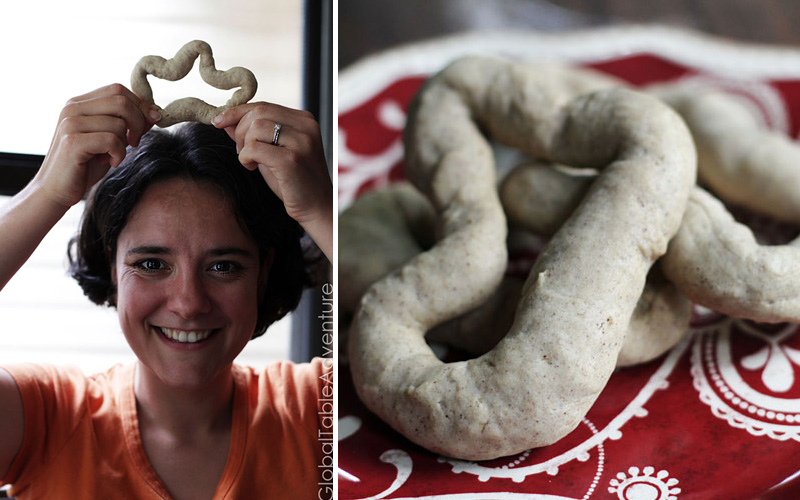
Makes 16 When I ask for a cookie, I expect to get a sugary, crispy, heart-racing cookie. Something that makes me thirst for milk. But that’s not always what happens. Take raivas, for example. These cinnamon loaded Portuguese cookies are subdued. Doughy. Bready. Dry. But don’t be fooled. The texture isn’t a mistake. They are made specifically for dunking. Dipping. Sogging-up coffee, hot cocoa or tea. So why are we making Portuguese cookies this week, when we’re cooking West Africa? Simple. The people of Guinea-Bissau love Portuguese baked goods because they were a former Portuguese colony. Walk into any big city bakery and you’ll see what I mean. So, come along, let’s jump on the cinnamon train with the squiggliest, wiggliest, doughiest cookies I’ve ever seen Inspired by Lindy and her adaptation from Cozinha Tradicional Portuguesa. Ingredients: 8 Tbsp Butter 1/2 cup sugar 4 eggs 3-3 1/4 cups flour 1 Tbsp cinnamon 1/4 tsp salt Method: Put on a shirt with a wiggly design. Play a wiggly song. Vow to make wiggles, not war. Here’s how …
Read More
Want to get up and dance? Shake a little soul onto the dance floor? Come, let’s find the beat, West African-style… with the Djembe, the drum of choice. Use it or lose it: The top of the drum is spread tightly with goat skin. Loads of goat meat is consumed in West Africa, often wrapped in banana leaves [recipe] or stewed, so making a djembe with the skin is a fantastic way to use the whole animal, not just the meat. As my mom always said, “waste not, want not.” Say what? The goats in West Africa live a tough, tough existence which, in turn, makes their skin tougher…. which, in turn, makes the drum sound different than djembes in other regions. Inspiration: I like to scour the net for people who have traveled, who can give me a picture of the foreign lands I can only dream about. Today I’d like to share with you two descriptions of dance in Guinea and Guinea Bissau… descriptions that I found inspirational. That made me want to …
Read More
Fills about 2 mason jars – 1 for you & 1 for a friend Have you seen the papayas at the market lately? They’re gorgeous. Sweet. Giant. Exotic. Plus they’re fun to pronounce: pa-pa-ya. Gotta love anything that ends with an affirmative. Since papayas are beloved in Guinea and Guinea Bissau, I really wanted to make papaya jam for you today. Unfortunately, jam making all but requires a chemistry major. I’m too footloose for that, so I made chutney. The cool thing about chutney is that it’s made the same way as jam, with the same ingredients… minus the powdered pectin and careful measuring. In other words, minus the headache. And, honestly, it’s quite a bit more authentic for West Africa. To give the chutney a bit of body I used the natural pectin found in orange peel. The result? A sweet, tropical chutney laced with the slightest hint of bitter orange peel (don’t be scared – it really is just a hint – nothing like bitter orange marmalade). NOTE: You may want to adjust …
Read More
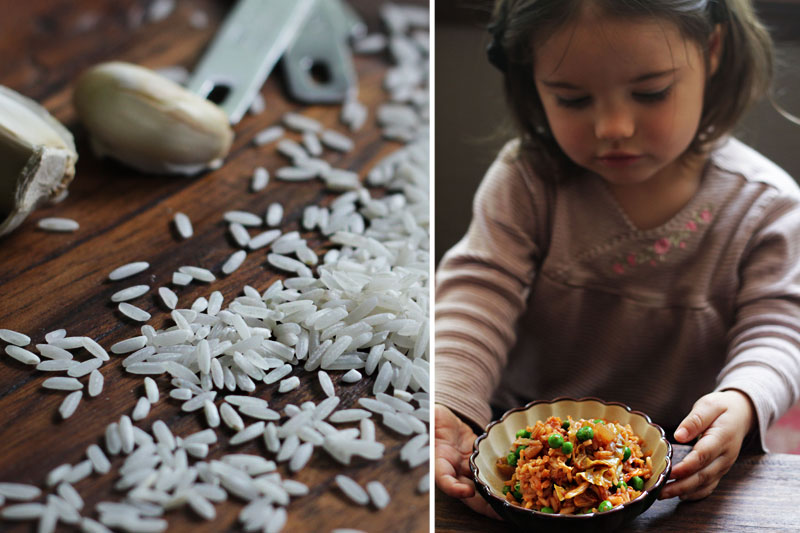
Have you ever felt pulled in two directions? Unsure of which way to go? Sometimes the best medicine is to find a happy medium, to go both places. Have double the fun. Case in point – this week we have one foot in Guinea and one foot in Guinea Bissau. For the most part this menu could be found in either country – except where noted. Double the fun, indeed. What sounds good to you? Yucca Fries [Recipe] Crispy, salty and healthier than French Fries. Popular all over sub-Saharan Africa. Jollof (West African Rice with Veggies) [Recipe] A simple, healthy combination of rice, spices, tomatoes, cabbage, and peas. Naturally vegan. Portuguese Cinnamon Cookies (Raivas) [Recipe] This recipe is a nod to Guinea-Bissau’s Portuguese heritage. When I read the city bakeries are full of Portuguese treats, I just knew I had to try this doughy bread-like “cookie.” Papaya & Orange Peel Chutney [Recipe] What do you get when you don’t want to mess with high tech canning? You trade the word jam for chutney. The mix is …
Read More
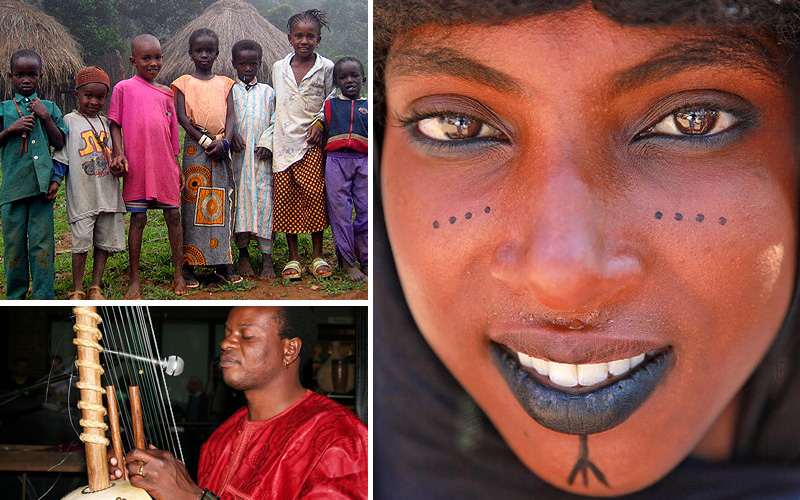
Are you ready? This week is a double hitter; we’re discussing two West African neighbors, Guinea and Guinea-Bissau. Don’t be fooled by their names – these countries are quite a bit different. Especially when it comes to the food. Sure they both share a love for typical West African foods, like Groundnut soup (absolutely amazing) [recipe], Batons de manioc (fascinating!) [recipe], Yucca Fries [Recipe], Jollof (a rice dish cooked with tomatoes and spices) [Recipe] and loads of tropical fruit so fresh it would make you weep (try this papaya chutney, for example [Recipe]), but they also have completely different cultures. For starters, Guinea is a former French colony. This means the city folk they pile their plates high with French-inspired dishes, like ones we’ve visited in the past – classic French omelets [recipe] or coupé coupé (smoked bbq meats) in a baguette sandwich [recipe]. On the other hand, Guinea-Bissau is a former Portuguese colony. Head into one of the big-town bakeries and you’ll likely see cases of Portuguese pastries, cookies [Recipe], and breads. You’ll also find tons of cashews …
Read More


